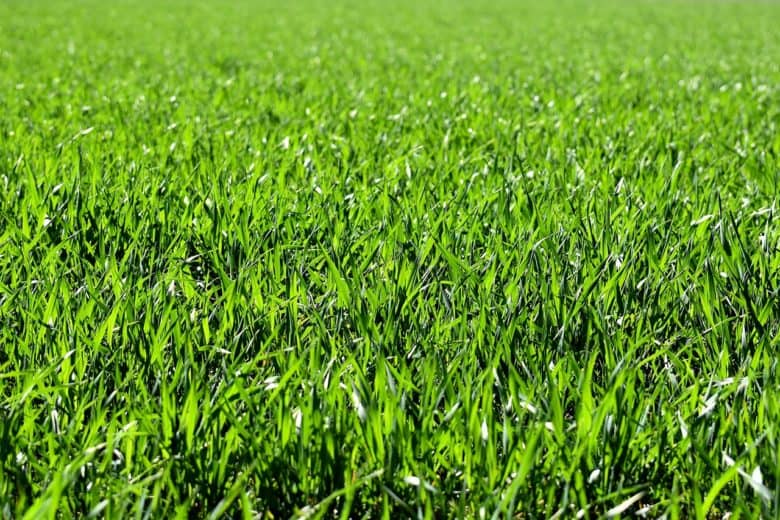
What Is Green Landscaping? Eco-Friendly Landscaping Techniques
We are reader-supported. When you buy through links on our site, we may earn affiliate commission.
The world is going green. From reusable shopping bags to biking to work, people everywhere are looking for more sustainable ways to live and reduce their impact on the environment. However, one area that’s often overlooked in terms of green living is your yard. There are so many ways to make your lawn, gardens and flowerbeds more eco-friendly and beautiful. By implementing green landscaping techniques, you can ensure an outdoor space that’s self-sustaining, chemical-free and natural.
What Is Green Landscaping?
Traditional home landscaping techniques such as mowing, fertilizing and watering can wreak havoc on the environment. Chemicals in fertilizers and pesticides pollute the air and surrounding waterways and negatively affect soil health. Lawns and plants that require watering can quickly use up valuable water supply, resulting in a shortage, like in California. However, green landscaping seeks to reduce these impacts. This method of gardening offers alternative, sustainable ways to help you choose the right plants for your yard and reduce the number of resources needed to maintain your lawn. Implementing green landscaping techniques also allows you to create a biodiverse ecosystem on your own property. There are many ways you can incorporate green landscaping into your lawn-care routine and make your green thumb even greener.
1. Composting
Fertilizing your soil is the first step to creating a thriving garden, but this doesn’t mean you should scatter chemical fertilizers all over your lawn. Save yourself some money and reduce waste by using your food scraps to enrich the soil instead. Create a backyard compost bin and toss in your eggshells, fruit peels and junk mail. Then, incorporate the compost into your garden or flowerbeds to nurture the soil and encourage healthy growth. Compost also helps control disease and insects, eliminating the need for pesticides or other chemicals.
2. Recycling
Recycling for green landscaping is a bit different from separating cans from bottles, but it still keeps items out of the landfill and gives them a second use. You can recycle coffee filters, paper bags and newspapers as mulch to help your soil hold moisture and protect against weeds, or try using old egg cartons, pie plates, and paper milk cartons as planters. You might even apply this thought process to create hardscapes, like patios and sidewalks, by using reclaimed wood, old bricks and broken concrete.
3. Natural Pest Control
Most pesticides at your local home improvement store or supermarket contain harsh chemicals that are toxic to animals, the environment, and you and your family. These toxins pollute the air and soil and can produce runoff, contaminating groundwater and surrounding land and waterways. Moreover, if you use them on vegetables or fruits, you risk ingesting these poisonous chemicals. Luckily, there are several natural pest control methods, like organic pesticides, garlic-mint spray, coffee grounds and essential oils, which you can use instead.
4. Xeriscaping
Green landscaping also entails conserving the Earth’s limited resources, like water. Xeriscaping is one way you can reduce your water use and save time. This type of landscaping refers to creating a design that can withstand drought conditions. You can do this by grouping plants with similar watering requirements or planting varieties that don’t require much watering, like succulents and desert grasses. You might also bring in rocks to define your lawn and create a different topography. This will help reduce watering time, lower your water bill and create a unique landscape that will have your neighbors talking.
5. Synthetic Grass
Installing turf or synthetic grass may be another way to conserve resources and keep your lawn looking vibrant and healthy all year. An artificial lawn requires little to no maintenance, which means you won’t have to use chemicals, pesticides or fertilizers. Moreover, you won’t need a lawnmower that could release fumes and add carbon to the air. This will also help conserve water, giving you an environmental boost and putting you in the running for certification of Leadership in Energy and Environmental Design.
6. Green Spaces
Green landscaping techniques can even extend outside your lawn as you look for new ways to put your green thumb to good use. Rooftop gardens are a great addition that can help keep your house cool and reduce stormwater runoff. Vegetable gardens are a sustainable way to grow your own food, even if you don’t have a big lawn. Many urban areas are also strategically incorporating green spaces into city development plans to encourage more people to get outside and appreciate the environment.
What’s Your Motivation?
Whether you’re looking to create a space that requires less maintenance, save money on lawn care expenses or simply do the Earth a favor, these green landscaping techniques are sure to help. However, if you’re dedicated to creating a more environmentally friendly home and yard and want more of a motivator, you may consider getting your home LEED certified.
Using recycled materials, committing to water efficiency and using innovative design both inside and outside your house can win you a LEED certification. This helps you reduce waste and conserve energy and gives your home ultimate curb appeal, making it easier to sell when you’re ready to move. Regardless of motivators, working toward building a greener home and yard is a noble goal in and of itself. If you choose to embark on this journey, you’ll join thousands of others who are committing their green thumbs to creating a greener planet.
Share on
Like what you read? Join other Environment.co readers!
Get the latest updates on our planet by subscribing to the Environment.co newsletter!
About the author

Jane Marsh
Starting from an early age, Jane Marsh loved all animals and became a budding environmentalist. Now, Jane works as the Editor-in-Chief of Environment.co where she covers topics related to climate policy, renewable energy, the food industry, and more.





